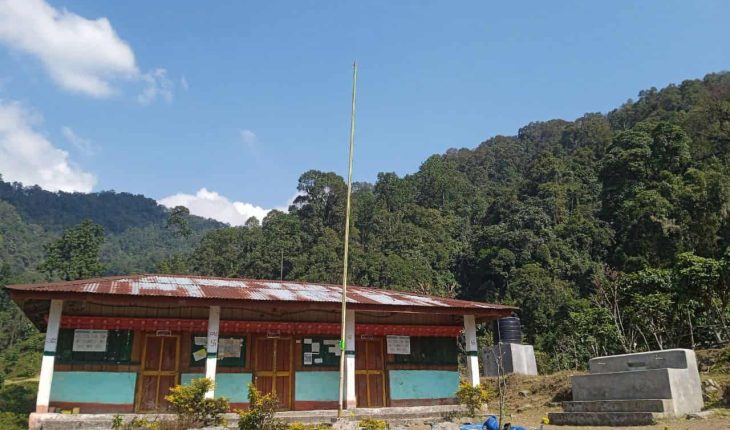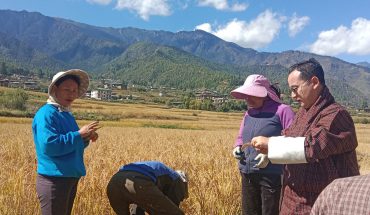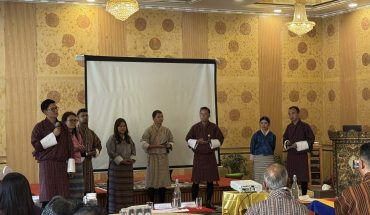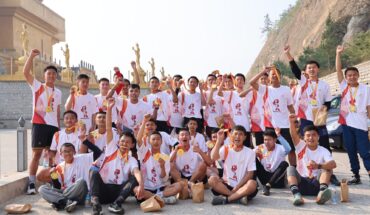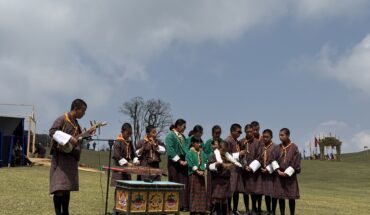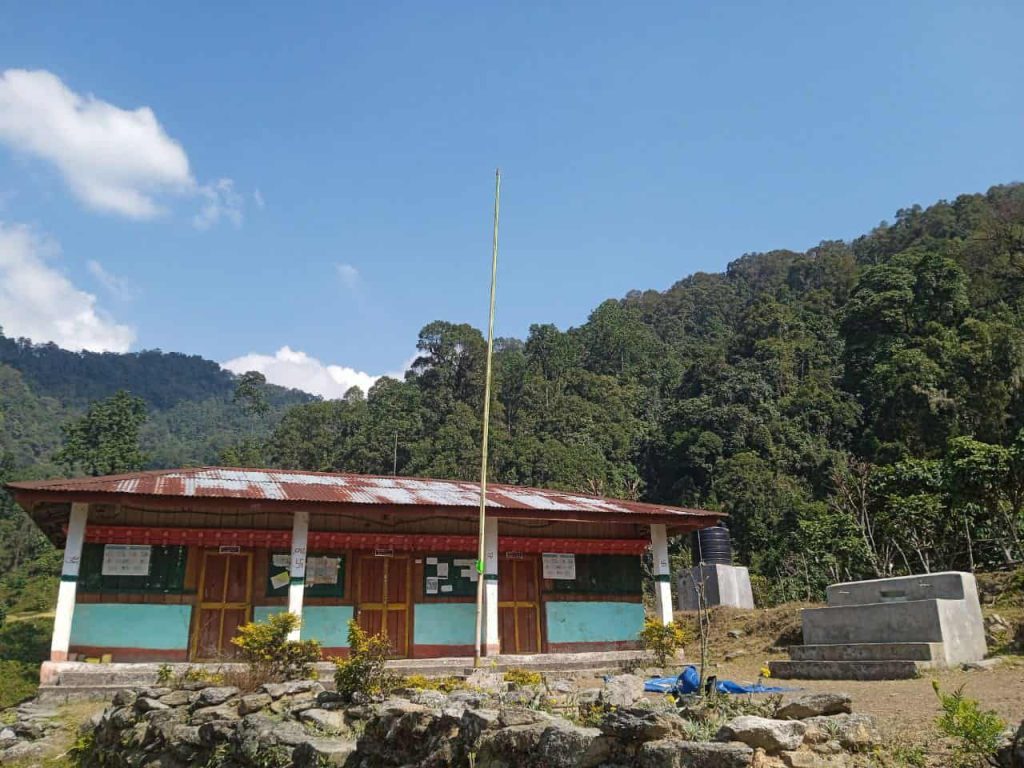
The Nakayling ECR in remote Pemaling Gewog, Samtse strives to educate children despite daunting landscapes and economic hurdles
TIL BDR GHALLEY | Samtse
Nestled amid the rolling hills and dense forests of Pemaling Gewog, Nakayling village presents a picturesque yet challenging landscape for education.
Scattered settlements dot the slopes, and narrow dirt paths wind through bamboo groves and streams, forming the daily route for children seeking schooling. For many families, even this short journey is a formidable obstacle.
Nakayling Extended Classroom (ECR), established in 2008 by the local community with bamboo, plastic sheets, and other available resources, remains the lifeline of education for the village’s children.
Initially enrolling around 30 students, the ECR now accommodates eight children, spanning pre-primary to grade three, all guided by a single facilitator. The government provides support to ensure the school continues to serve the community.
Inside the ECR, the small classroom buzzes with activity. Eight children sit at wooden desks under the guidance of a single facilitator, who balances lessons across multiple grades.
Despite limited resources, students are eager to learn, illustrating the critical role of the ECR in nurturing early education.
“Nakayling is one of the farthest and most remote chewogs in Pemaling Gewog. The ECR is essential because our students are scattered, and without it many would have no access to early education,” said Pemaling Gup R.K. Ghalley.
For those who attend the nearest primary school at Tashithang primary school, the journey is long and arduous. Students wake as early as 4:30 a.m., walking several kilometers through dense forest along narrow, winding paths that cut through bamboo groves and over rocky streams.
During the monsoon season, the trek becomes even more precarious, with swollen streams, slippery trails, and the looming presence of wild animals leaving families anxious each morning.
The village Tshogpa described the hardship faced by parents and children alike.
“Although I understand that a small number of students and one teacher could be seen as a burden for the government, it would be great if government could provide necessary support,” he said.
He added that children from Nakayling have to wake very early, and the route is unsafe during monsoons. Additionally, there is no boarding facility, so parents must accompany their children.
The ECR was born out of the village’s determination to provide education despite these challenges. Initially, many residents were uneducated and hesitant to send their children to distant schools.
The Tshogpa said, “The community contributed what they could to open this ECR. We wanted our children to have the chance to learn without risking long, unsafe journeys.”
Parents also expressed the personal impact of the ECR.
Karina, mother of two students, said, “If the ECR closes, my children would have to walk hours through the forest every day. It’s too risky, especially during rains. This school allows them to learn safely near home.”
Despite recommendations from the government to merge Nakayling ECR with Tashithang Primary School, villagers strongly opposed the plan.
Gup RK Ghalley said walking to Tashithang takes nearly two hours and there are no boarding facilities while renting a house is difficult.
“Parents would have to stay with their kids, leaving household and farm work unattended. We request the government to understand and continue supporting Nakayling ECR for a few more years,” he said.
“The ECR may be small, but it is critical for our children. Without it, many children would remain out of school for years, especially those whose parents cannot accompany them to distant schools,” Bir Bdr Ghalley a resident said.
Other community members echoed the call for support. Dhan Raj said, “The ECR gives hope to our village. Even a few more years of support from the government would make a huge difference for our children’s future.”
The Tshogpa described the ECR as more than a school. “This ECR is more than a temple in the village; it stands as a sacred space where the hopes and dreams of every child are nurtured, where the community’s dedication to education comes alive, and where generations of families find the promise of a brighter future amidst the remote hills and scattered homes of Nakayling,” he said.
The story of Nakayling ECR reflects broader challenges in Bhutan’s rural education system, dispersed settlements, scarce resources, and natural hazards that complicate access.
Yet, it also highlights the resilience of a community determined to create opportunities for the next generation.
Leaders and villagers continue to advocate for sustained government support, emphasizing that even a few more years of assistance could transform the educational outcomes of children in this remote area.
As the morning mist lifts over Nakayling village, the faint sounds of children reciting lessons drift through the village, a quiet reflection of the community’s unwavering commitment to education despite distance, difficult terrain, and dwindling numbers.
For the families here, the ECR is more than a school, it is the promise of a brighter future for their children.

